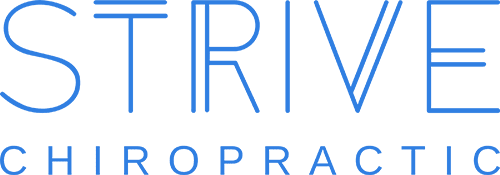Heal Tennis Elbow For Good
Heal Tennis Elbow For Good
Do you have pain that radiates from your elbow, down your forearms, and into your wrists and hands? Is it difficult to hold a firm grip? Perhaps even the simple act of picking up a cup of coffee or shaking hands can cause discomfort.
If this sounds like you, chances are you’re suffering from tennis elbow. Though it can start out as relatively small discomfort, when left untreated, it can become truly intrusive to everyday life.
Fortunately, tennis elbow typically responds very well to treatment with the right approach. Read on if you’re looking to put your pain behind you for good.
What Is Tennis Elbow?
I’m not a tennis player, but I have the symptoms of tennis elbow. Can I still have it if I don’t play tennis?
Absolutely.
Tennis elbow, medically known as lateral epicondylitis, is an overuse injury, meaning it occurs over time from using the muscles in your forearm excessively. It gets the nickname “tennis elbow” from the many tennis players who have suffered from this injury over years of repeated forearm use swinging a racket. However, any repetitive motion that stresses the forearm can cause this injury. Other common causes include painting, plumbing work, yard work, and even computer work.
Pain from tennis elbow normally reveals itself at the area where the forearm tendons attach to the outside of the bony elbow. Additionally, the reason that tennis elbow causes so much discomfort is that the repeated strain happening over time results in small, tiny tears within the muscles of the forearm. Ouch.
Speed Up Your Healing Process
First and foremost, if you think that you’re struggling with tennis elbow, it’s best to see a doctor to get an appropriate evaluation and diagnosis right away. Successful recovery from tennis elbow often hinges on beginning treatment at an early stage. A doctor will be able to assess how serious your injury is, and guide you through the appropriate steps for your particular situation.
That said, the following are some tried-and-true guidelines to help speed up the recovery for most cases of tennis elbow. The best part? You can do these from the comfort of your own home.
Ice It Up
Anything that can reduce inflammation can help curb both the discomfort in the moment, and help with the healing process over time. Try applying an ice pack to the affected area in 10-15 minute increments, making sure to use a towel as a thin barrier between the cold pack and your skin to prevent any burning.
Rest Is Your Friend
An overuse injury is your body’s way of sending a message– it’s being used too much! First and foremost, try to limit the offending activities as much as possible. For instance, if you do happen to be a tennis player, you may need to dial back the amount of time you’re spending on the court until you’re able to get this injury under control.
In addition to stepping back from the activities that aggravate your pain, you may also want to consider a brace or sling to further immobilize the area. Sometimes, we don’t realize just how much we use certain parts of our body throughout a normal workday– a brace or sling can help remind you to take it a bit easier and offer a little extra protection to your forearm.
Incorporate Gentle Stretching
Your forearms are likely pretty darn tight from overuse, and some gentle stretching can help both provide relief and some much-needed mobility to the area.
In particular a forearm flexor stretch can be beneficial. Start by extending your arm straight out in front of you, with the palm facing up. Then, use your other hand to gently pull the fingertips of the outstretched arm toward your body and hold for up to 30 seconds. Repeat this 3-4 times daily.
Chiropractic Treatment For Tennis Elbow
As you work toward complete healing from tennis elbow, seeking out chiropractic treatment is another great way to further support your body. A chiropractic practitioner uses gentle adjustments of the spine, neck, and extremities to help to realign your body, decrease pressure, and provide real relief to allow your system to restore proper function and speed the healing process. In particular, the adjustments of the extremities target the build-up of pressure that can cause much of the irritation from tennis elbow.
Your practitioner will be able to support your specific needs by taking a personalized approach to each session, and will meet you at your unique starting point. Additionally, should any at-home exercises be beneficial to help your recovery process along, your chiropractor will be able to help with this too.
You don’t need to accept pain as a part of your daily life.
Schedule an appointment online or call us today.
This article is for informational purposes only and is not a substitute for in-person advice or care from a medical professional.

